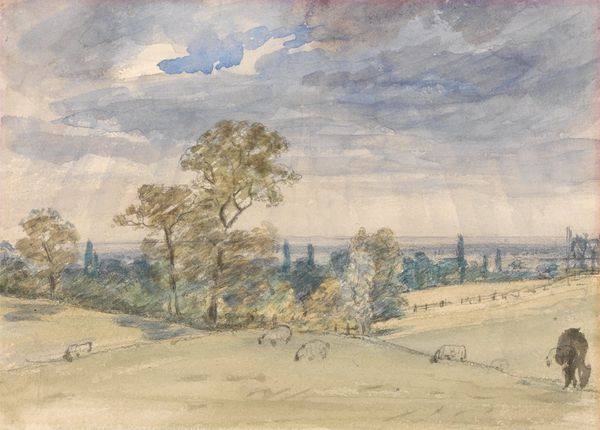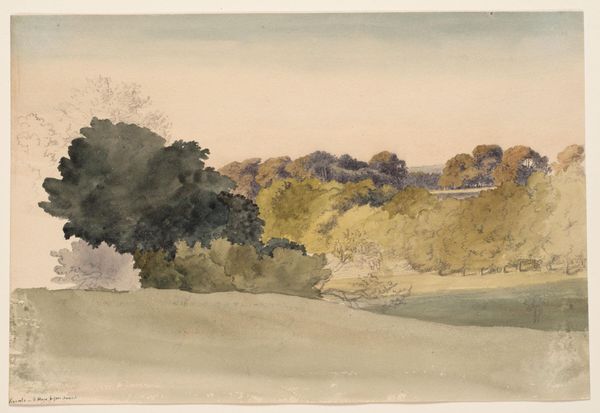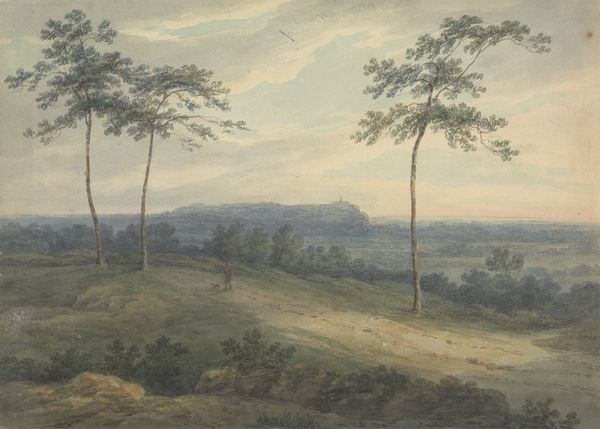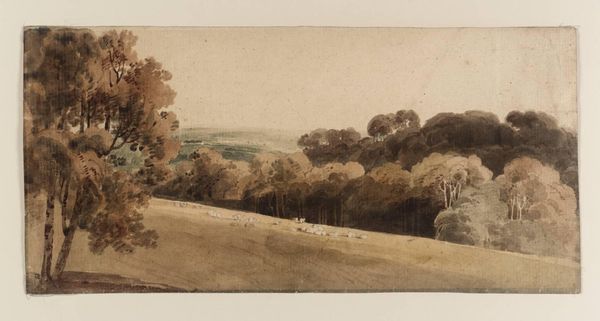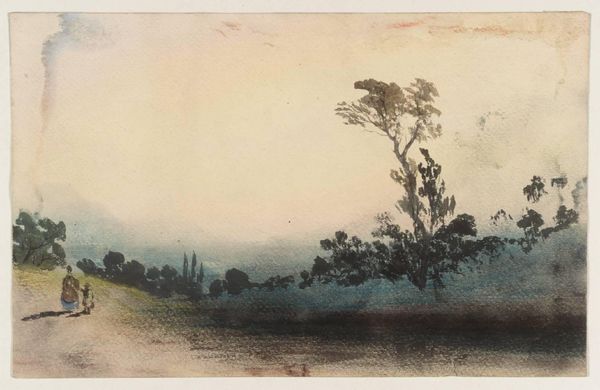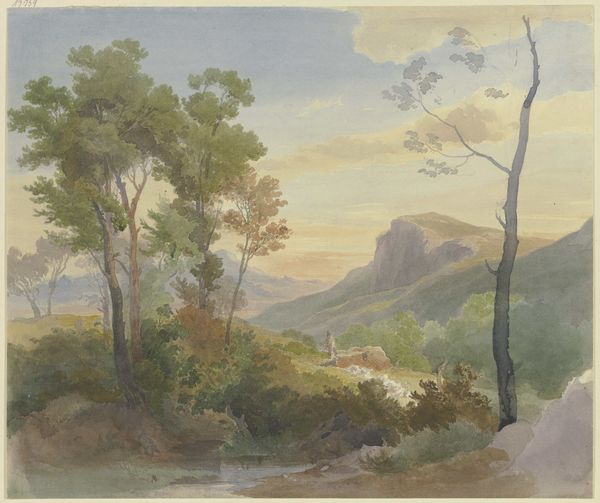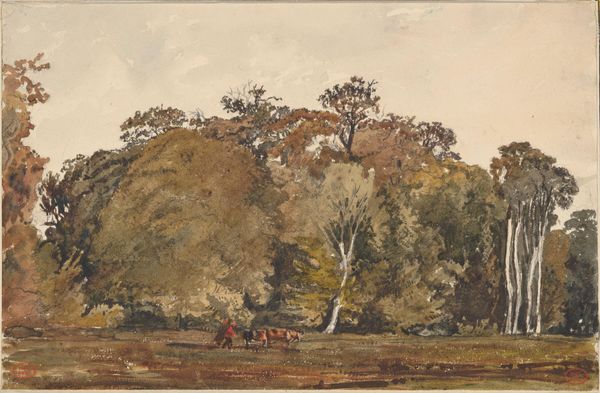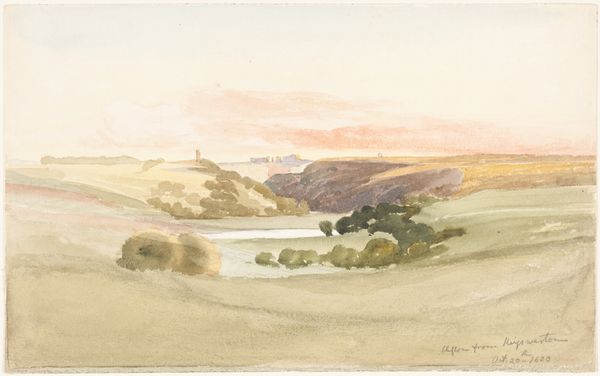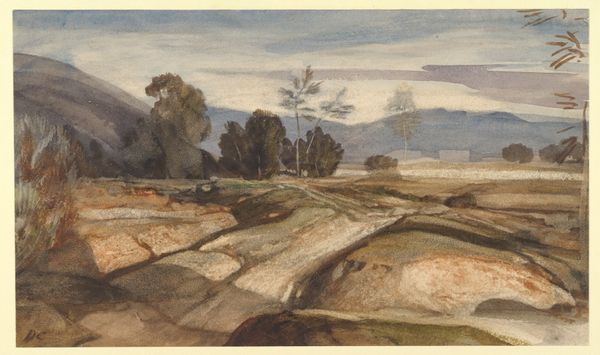
Copyright: Public domain
Editor: Here we have William Leighton Leitch's "A Parkland View at Dusk" from 1879, rendered beautifully in watercolor. The overall effect is incredibly calming, almost melancholic. What stands out to you, and how do you interpret this work? Curator: The melancholic feel you describe speaks volumes about the Romantic era's fascination with nature as a space for emotional and even spiritual reflection. However, looking at it through a contemporary lens, I consider the historical context. Parkland landscapes like these were often maintained by wealthy landowners, embodying privilege and exclusion. Do you think the seemingly innocent, tranquil scene might also subtly reflect these social hierarchies of the time? Editor: That’s a great point. I hadn’t considered the social implications embedded within what appears to be a simple landscape. So, while on the surface it evokes peace, it might also silently echo the disparities of Victorian society? Curator: Precisely. And consider the act of painting en plein air, popular then – who had the leisure time and access to these landscapes? These weren’t neutral spaces, and the very act of capturing them in art had social implications. Could we view this as a subtle documentation, or perhaps even an unconscious endorsement, of the status quo? Editor: That’s a powerful interpretation. It shifts my understanding of the painting completely. Curator: Art is rarely created in a vacuum. By understanding the social and political landscape of the time, we can uncover deeper layers of meaning in even the most serene images. Editor: I'll definitely be keeping an eye out for those underlying messages moving forward! This was so interesting, thank you.
Comments
No comments
Be the first to comment and join the conversation on the ultimate creative platform.



